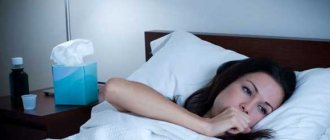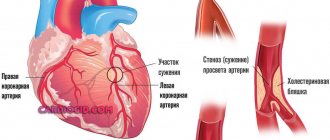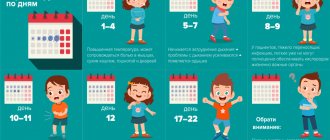Why do my ears hurt?
Ear pain occurs for various external and internal reasons:
- ear injury. An accidental blow can damage the cartilage and external auditory canal. Sometimes pain occurs when there is strong pressure on the ear: for example, when wearing a tight hat or headphones;
- entry of a foreign object into the external auditory canal. Most often, this problem occurs in young children;
- damage to the lining of the external auditory canal. A careless attempt to remove accumulated wax from the ears can damage the thin skin of the external auditory canal. The scratch becomes inflamed and swollen, an unpleasant aching pain appears;
- ingress of water while swimming. One of the most common causes faced by both children and adults. To avoid getting water when immersed in water, it is recommended to use earplugs;
- exposure to loud noise. WHO estimates that about 1.1 billion people are at risk of hearing damage in entertainment settings due to music or noise that is too loud. This exposure is usually accompanied by minor ear pain. No less dangerous is constant exposure to noise pollution (for example, in some industries), which leads to the development of hearing loss, but is not accompanied by pain;
- accumulation of large amounts of earwax. A cerumen plug forms, which presses on the walls of the ear canal, causing pain.
Symptoms of ear diseases:
- painful sensations in the ear;
- deterioration or loss of hearing;
- feeling of ear fullness;
- pathological discharge from the ear;
- dizziness, balance disorder;
- noise in ears.
Help on medicinal plants
Warming teas are well suited for tingling in the ear area for therapeutic treatment of the underlying disease. List of herbs that are recommended:
- chamomile, - garlic, - mullein, - lavender, - lemon balm, - parsley, - peppermint, - sage, - thyme - and onion.
Some of these herbs can also be used as a spice for warm broths and other fortifying dishes. A peeled clove of garlic wrapped in cotton can also be placed directly into the ear, allowing the antibacterial components of the garlic to quickly penetrate the site of infection.
Herbal supplements for steam or medicinal baths are also recommended. However, when swimming, please be careful not to let water get into your ears to avoid aggravating the infection due to residual water.
Why does it shoot in my ear?
Acute shooting pain in the ear can be a symptom of infection; severe and severe pain is caused by diseases such as:
- mastoiditis – inflammation of the mastoid process of the temporal bone, accompanied by the accumulation of pus;
- Otitis externa is an inflammation of the outer part of the ear, which includes the pinna, external auditory canal and eardrum;
- Otitis media is an inflammation of the middle section. Usually develops as a complication of other ENT infections: for example, tonsillitis or laryngitis;
- Labyrinthitis is an irritation of the inner ear caused by viruses or bacteria. In addition to severe pain, the patient may complain of dizziness and loss of balance.
Any pain in the ear indicates pathological processes occurring in it. Chronic infections and untreated injuries cause hearing loss. To get rid of pain and prevent the development of hearing loss, it is recommended to make an appointment with an otolaryngologist.
Traditional methods of treatment
Traditional methods will allow you to effectively and safely get rid of ear pain. But it should be remembered that in severe inflammatory processes it is better to combine traditional medicine with traditional medicine (monotherapy may not be effective enough).
Radish/horseradish juice
Radish and horseradish are natural healers. They help cure even serious diseases - otitis media and eustachitis. Used for inflammatory processes, purulent discharge, pain.
The method of application is identical. Soak a cotton swab in horseradish/radish juice and carefully insert it into the ear canal. Cover the top with polyethylene or woolen cloth and secure it (for example, by putting on a hat or tying a scarf around your head). Keep the compress all night. Perform the procedure daily until complete recovery.
Vegetable oil
Vegetable oil relieves pain and eliminates inflammation. It is enough to soak cotton wool in oil, insert it into the sore ear and hold it there throughout the night. To avoid staining the pillow with oil, you should put a bandage on your ear.
Onion juice
Onion juice is a proven folk method that relieves ear pain and has an anti-inflammatory effect. Peel the onion and chop it on a fine grater. Squeeze out the resulting pulp, wrapping it in a gauze bag.
Onion juice can be used in two ways
:
- Place a few drops of juice into the sore ear before going to bed.
- Soak a cotton swab in onion juice, insert it into your ear and keep it there overnight.
Onion juice is especially effective for ear pain caused by colds. An additional effect is that it combats nasal congestion.
Important! Onion juice therapy may be accompanied by a burning sensation. This is normal and does not require cessation of treatment.
Aloe juice
Aloe has a healing effect and helps get rid of many diseases. Effectively fights ear pain and relieves inflammation.
Cut a fresh aloe leaf lengthwise and then squeeze it out. Soak cotton wool in the juice, roll it into a tourniquet and insert it into the sore ear. After 5-6 hours, carefully remove the cotton wool. Carry out the procedure twice a day.
Cologne
Eliminating ear pain with cologne
:
- roll the gauze in several layers, make a small slit in the center for the ear;
- Dilute cologne with water in a ratio of 3:1, heat to 37-38°, moisten gauze in it;
- fix the wet gauze on the ear so that the auricle is not closed;
- Cover the top of the gauze with a plastic bag, a thick layer of cotton pad and a woolen scarf;
- keep the compress for 3 hours.
During the procedure, a slight burning sensation may occur.
Calendula
Calendula contains antioxidants that enhance immunity and accelerate blood flow to the inflamed area. This leads to improved metabolic processes, rapid regeneration of damaged tissue, elimination of inflammation in the auricle and a speedy recovery. In addition, calendula has an analgesic and disinfectant effect.
Calendula helps destroy pathogenic microorganisms. The essential oils in its composition have a calming effect. It is used in the complex treatment of otitis media, eustachitis, and inflammatory processes in the ear.
When using calendula to treat ear pain, it is recommended to prepare an infusion yourself. Pharmacy tincture of calendula, if used regularly, can cause a burn.
Healing tincture of calendula
To prepare the infusion, pour a handful of calendula flowers into a jar and add hot water. Close tightly and leave in a dark place for 2 hours. Strain and squeeze out the calendula petals.
Calendula treatment methods
:
- Burial
. Instill 4 drops into the sore ear three times a day. - Compress
. Soak cotton wool in the infusion, twist it into a tourniquet and insert it into the ear overnight. - Ointment
. Calendula infusion can be used comprehensively by adding it to a medicinal ointment for otitis media. Mix the mixture and apply to cotton wool. Insert a tourniquet into the inflamed ear before going to bed. - Rubbing
. Drop the prepared product onto your index finger. Gently rub the ear from the outside. Carry out the procedure several times a day. - Compress
. Soak the gauze in the infusion. Make a cut in it and fix it on the ear so that the compress covers the area around the ear. The duration of the procedure is 3-4 hours.
To eliminate ear pain, you can also use calendula tincture with alcohol. To do this, pour 100 ml of vodka and 50 g of calendula flowers. Close the container with the solution tightly and leave in a cool, dark place for a week. Before use, dilute the tincture (10 ml) with clean warm water (100 ml). The application method is similar.
Important! Alcohol tincture of calendula, if improperly prepared and diluted, can cause severe burns to the auricle.
What to do if your ears hurt when you have a cold?
Aching pain in the ears can occur due to a cold. Due to the close proximity of the ENT organs, the infection spreads to neighboring areas: for example, a sore throat is often accompanied by a runny nose, and rhinitis leads to painful pressure in one or both ears. Why is this happening?
When you have a runny nose, your paranasal sinuses become inflamed and swollen. This interferes with the normal removal of fluid, mucus accumulates, and bacteria begin to actively multiply in it. Gradually, irritation affects the Eustachian tube, sensations of unpleasant itching and pressure on the ears appear, and pain occurs. To avoid this, during a cold it is necessary to use vasoconstrictor nasal drops: they restore normal ventilation in the sinuses and reduce the risk of inflammation of the Eustachian tube.
If you consult a doctor in time and follow the prescribed treatment, ear pain due to a cold will quickly go away. But if you have already recovered, and the discomfort in your hearing organs has not gone away, there is a risk of developing complications. In this case, you need to make an appointment with an ENT specialist as soon as possible.
ENT diseases and tingling in the ears
Colds and flu are not the only ear, nose, and throat conditions that can cause a burning sensation in the ear. In principle, diseases such as inflammation of the mucous membrane and lymphoid tissue of the pharynx (Pharyngitis), inflammation of the tonsils (Tonsillitis) and inflammatory disease of the mucous membrane of the paranasal sinuses (Sinusitis) can spread to the ear through the Eustachian tube.
Even lower respiratory diseases such as pneumonia can travel up to the ear through the neck and throat area. In the early stages of these diseases, it is often difficult to tell whether the symptoms of the disease are just spreading into the ear area or whether the infection has already spread deep into the ear.
Attention: Infectious diseases always carry the risk of blood poisoning (sepsis)! This is even more likely if infectious agents have already spread. Therefore, early treatment is extremely important!
What is otitis media and how does it manifest?
Ear pain is often caused by otitis media, an infectious inflammation of the hearing aid. Otolaryngologists distinguish three forms of the disease:
- otitis externa A disease of the outer ear in which a purulent boil forms in the ear canal. If the inflammation is not treated, it spreads to the eardrum, which causes not only pain, but also
Hearing problems in children: hearing loss; - Otitis media Develops when an infection enters the middle ear. Causes shooting pain and a feeling of pressure. The patient's temperature rises, pus or ichor may be discharged from the ear;
- internal otitis or labyrinthitis. Otitis media can spread to the inner ear and cause labyrinthitis. Symptoms of otitis media include severe headaches, loss of balance, and dizziness.
Otitis can be acute and chronic. In the acute stage, the disease is manifested by high fever (38.5℃), weakness, lethargy and apathy. Chronic otitis media leads to a gradual decrease in hearing; the pain may not be severe, but constant.
Associated symptoms
With various ear diseases, aching pain is accompanied by other symptoms. More often:
- noise;
- decreased perception of sound;
- pain in different parts of the head;
- feeling of heaviness in the ear and temporal areas;
- speech disorders, etc.
With unilateral pathology, this symptomatology concerns the pathology of one ear, with bilateral pathology - both.
The number of symptoms increases depending on the stage of the disease; the higher the degree of development of any disease, the more extensive the symptoms. Thus, additional symptoms may accompany severe hearing loss:
- loss of coordination;
- pressure surges;
- vomit;
- temperature, etc.
It must be taken into account that symptoms, even with the same diagnosis, manifest themselves differently in different people. If a person has an increased sensitivity threshold, then the pain will be more severe and the symptoms will be more pronounced. With nervous disorders, ear pain may appear, accompanied by increased fatigue, excitability, insomnia, and so on. There is a group of patients whose symptoms, even in acute forms of the disease, are practically not expressed. They do not know about the existence of pathology of the ear system. That's why otolaryngologists advise undergoing preventative ear examinations, even if nothing is bothering you yet.
Identifying the disease at the initial stage means it is easy to cope with it.
Ear otitis - how to treat?
Treatment of otitis depends on the form and stage of the disease. To make an accurate diagnosis, you need to contact an ENT specialist. The doctor will develop a treatment regimen taking into account the individual characteristics of the patient’s body. Typically treatment for otitis media is as follows:
- taking antimicrobial and anti-inflammatory drugs. Medicines fight the pathogen, relieve swelling and inflammation;
- Antipyretics are prescribed for high temperatures. Also, if necessary, the otolaryngologist can prescribe a course of antibiotics;
- removal of pus from the outer ear. To do this, cotton swabs (turundas) moistened with alcohol or other disinfectant are immersed in the ear canal. They collect pus and disinfect surrounding tissues.
After recovery, the ENT specialist may prescribe physiotherapy to restore local immunity (for example, UHF, drug electrophoresis). Untreated otitis media can lead to a ruptured eardrum. Therefore, if ear pain occurs, it is important not to self-medicate, but to seek medical help.
How to distinguish otitis media from cerumen plug?
Ear pain does not always indicate the development of an infection. Perhaps the painful sensations are caused by sulfur plugs. In the outer ear there are special glands that produce earwax, a secretion that protects the organ from pathogenic bacteria. When the glands malfunction, the wax becomes too dense and begins to accumulate in the ear, which leads to the formation of a plug.
For a long time, the accumulation of sulfur does not cause any discomfort, but over time the plug becomes larger and larger and can completely block the lumen of the ear canal. As a result, a person experiences a feeling of fullness in the ears.
If the plug puts pressure on the eardrum, headaches and nausea may occur. But at the same time, the plug does not lead to an increase in body temperature and purulent discharge from the ear canal (as happens with purulent otitis media). The pain with a plug is moderate, not shooting, which also makes it possible to distinguish it from an infection.
Character of the temperature curve
Inflammation in the ears is characterized by hyperthermia with fluctuations at different times of the day. As a rule, in the morning hours its numbers decrease and increase in the evening. Such fluctuations can exceed 1 C and last for 3-4 days.
Reasons for the temperature drop:
- the patient starts taking antibiotics;
- The membrane ruptures and pus flows out.
If complications occur (a breakthrough of pus into the cranial cavity with the development of meningitis or an abscess in the brain tissue), the temperature rises sharply and the patient’s condition worsens.
Removing wax plug
Do not try to remove earwax yourself using a cotton swab. This way you will only push it deep into the ear canal, and it will begin to put pressure on the eardrum. Removal of wax plug is a procedure that can be performed in the otolaryngology department of the medical center. It looks like this:
- the patient is asked to tilt his head at a certain angle;
- the doctor inserts a Janet syringe (without a needle) into the ear;
- A heated solution is supplied under pressure, which washes the plug out of the ear.
The procedure is painless and effective.
How does a boil in the ear hurt?
Another cause of ear pain is the formation of a boil in the external auditory canal. It can appear when the skin is injured: for example, when cleaning wax from the ears carelessly. An infection penetrates into the scratch, inflammation begins and a purulent boil forms.
The pain is moderate at first, but becomes stronger as the boil grows. It often radiates to the jaw and neck, and worsens when chewing. In addition to pain, the patient may complain of itching and a feeling of fullness, as well as decreased hearing due to partial blockage of the ear canal.
Ear pain at night - what to do?
Due to the structural features of the hearing aid, ear pain intensifies when a person assumes a horizontal body position. Therefore, the pain often worsens at night during sleep. To reduce pain, you can:
- move your jaws (make chewing movements) - this allows you to equalize the pressure in the middle and inner ear and helps reduce pain;
- apply a cold compress - soak a towel in cool water and place it on the sore ear;
- Take your usual pain reliever.
Be sure to make an appointment with an ENT doctor. You cannot treat ear pain on your own, as this can aggravate the disease and lead to the development of hearing loss.
Ear pain - what to do at home
To cure the ear, it is necessary to make an accurate diagnosis. This can only be done by an otolaryngologist after otoscopy and additional studies. The following remedies for self-relief of pain are unacceptable:
- warming up the ear, as inflammation intensifies and the infection worsens;
- use of ear drops. Some of them contain components that can damage the auditory nerve. Do not use any medications before consulting a doctor.
It is allowed to insert a thick turunda (cotton swab) moistened with 70% formic alcohol into the outer auditory cover. Alcohol disinfects the passage and also gently warms the surrounding tissues, which will reduce pain. Turunda should not be placed if the eardrum is damaged or if there are scratches in the external auditory canal.
When to contact an otolaryngologist?
It is necessary to make an appointment with a doctor if the following symptoms appear:
- earache;
- hearing loss;
- changes in the ear (redness, swelling, rash);
- atypical discharge from the ear canal (pus, ichor);
- itching in the ear canal;
- change in acoustic perception (tinnitus, noise, autophony - echo from one’s own voice).
Ear pain can be caused by various reasons. If discomfort occurs, we recommend not to self-medicate, but to seek help from an otolaryngologist. An ENT specialist will make an accurate diagnosis and select an effective treatment that will not only relieve symptoms, but also eliminate the cause of ear pain.
Prevention
To prevent diseases not only of the ear area, but also of any organ of your body, take care of yourself:
- go to a nutritionist and determine the right healthy diet;
- start doing, if not sports, but at least physical education;
- go to bed on time and get up early;
- do not overwork at work;
- don't be nervous about trifles.
Believe me, these rules do not require either cash investments or a huge amount of time. All you need is desire. In a healthy body, as a rule, there are always healthy ears.











